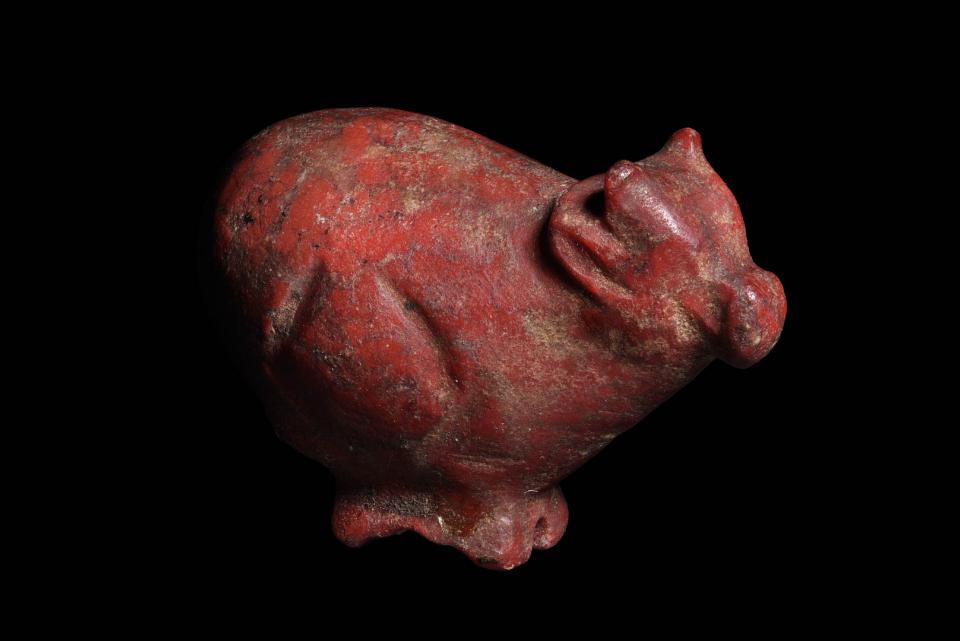Food and Transportation
Wooden models depicting butchery are found in Egyptian burials of the Middle Kingdom. Food was required by living people, but it was also needed to sustain their souls after death, and even to feed the gods.
Donkeys were the main animal used for transportation. Horses were introduced in the New Kingdom and used to pull chariots, while camels were only introduced to the region in the Roman Period.
Amulet in the form of a calf, bound for slaughter. Egypt; New Kingdom (1550-1069bc). E.9200

Image by Julia Thorne, Tetisheri
Butcher’s block, from a wooden funerary model found in grave 279 of John Garstang’s excavations at the ancient Egyptian site of Beni Hassan. This object has been identified as a block used by a butcher due to the red paint around the top, likely emulating blood dripping down the side of the object.
Wooden models of food production were frequently included in tombs from the First Intermediate Period and Middle Kingdom. They were designed to magically provide food and goods for the soul of the tomb owner, for eternity. Beni Hassan, Egypt; Middle Kingdom (2055-1650bc). E.11166
Ceramic vessel containing animal fat. Egypt; Pan Grave Culture (1800-1550bc). E.6869
Section of papyrus Book of the Dead of a priest of Amun named Bakenkhons. This scene depicts agricultural work in the afterlife. Egypt; New Kingdom (1292-1189bc). E.506/5
_2016-16-16-07755_161116_crop_LR-959x214.jpg)
Image by Julia Thorne, Tetisheri
Living during the ancient Egyptian 13th Dynasty (late Middle Kingdom), Amenysoneb was probably in charge of one rota of the priests at the temple of the god Osiris at Abydos. His stela is unusual because it is double-sided (meaning it was probably meant to be viewed in the round), and its decoration is arranged around a large ‘ankh’ sign, the loop of which actually perforates the stela.
On the front, Amenysoneb worships the jackal god Wepwawet. Family members and other dependents are depicted sitting in the lower registers.
The back of this stela is also very interesting. Six registers show different scenes of daily life: food preparation, animal slaughter, sowing, reaping, milling, baking and brewing. The depiction of scenes of daily life such as these is common in Egyptian tombs, but on stelae it is extremely rare.
Abydos, Egypt; Late Middle Kingdom (1803-1649bc). E.30
Cameo with decoration depicting two horses side by side, likely pulling a chariot. Meroë, Sudan; Meroitic Period (542bc-350ad). C.1132
Fragment of faience chalice with depiction of horses pulling a chariot. Egypt; New Kingdom (1292-1189bc). E.215
Previous: Using Animals
Next: Raw Materials